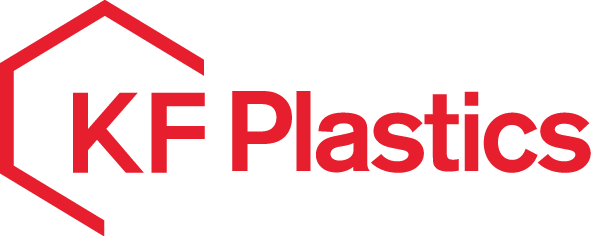Sustainable Plastic Fabrication Trends for Sydney Businesses in 2025: Embracing Recycled Materials and Circular Economy Practices
Sustainability has become one of the most consistent trends shaping Sydney’s manufacturing and design industries. From shopfitters and signage companies to architects and event producers, more businesses are asking how they can integrate eco-friendly plastics into their projects without compromising on quality, cost, or performance.
At KF Plastics, we’re seeing a steady rise in enquiries about recycled materials and circular economy fabrication. Particularly from customers in retail, construction, and exhibitions. The difference now is that sustainable plastics are more available and cost-comparative than ever before.
1. Recycled Plastics Are Now a Practical Option
Recycled plastics have evolved from being a niche material into a realistic choice for commercial fabrication. Improvements in supply and processing mean materials such as recycled HDPE and acrylic alternatives can now achieve similar machining and visual performance to new plastics.
For example, we recently produced an entire exhibition worth of museum grade display boxes for a Sydney museum using Green Tick recycled acrylic, made from a minimum of 80% recycled material (not regrind). The result was indistinguishable from standard acrylic, a clear sign that recycled options can meet professional display standards while keeping costs aligned.
Common sustainable material options include:
Recycled HDPE: durable and versatile for panels, fixtures, and reusable parts.
Reprocessed Acrylic: clear, machinable, and suitable for displays and signage.
Foam PVC alternatives: lighter and recyclable for point of sale and shopfitting projects.
2. Circular Economy Practices Are Emerging
Sydney based fabricators are starting to apply circular economy principles in practical ways, designing products that are easier to reuse, rebrand, or recycle at end of life. This includes:
-
Cut-to-size materials to minimise offcuts and waste.
-
Modular display designs that can be reused for future campaigns.
-
Material recovery programs for collecting and reprocessing leftover and used parts. We are finding that this part is the trickiest as the cost for disposal can be the most prohibitive part or ensuring a circular economy.
While recycling infrastructure for acrylic and similar plastics remains limited, small-scale programs — such as our drop off recycling initiative can help local businesses, schools, and individuals responsibly dispose of smaller acrylic offcuts.
3. Local Fabrication Reduces Emissions and Delays
With transport costs rising and sustainability goals tightening, local manufacturing has become another key consideration.
Producing parts locally in Sydney not only shortens lead times and improves quality control but also reduces emissions from freight and packaging. Many customers are now factoring this into procurement decisions as part of their sustainability commitments.
4. Cost-Effective Sustainability
Sustainability doesn’t have to mean a higher price tag. The cost of recycled materials has become increasingly competitive, especially as supply grows and more customers adopt them. When combined with smart design and efficient nesting during production, sustainable fabrication can even reduce waste and improve job margins.
5. What to Consider for Your Next Project
When planning upcoming builds, signage, or retail displays, consider materials and processes that balance performance with environmental responsibility.
Ask suppliers about:
-
Availability of recycled material grades
-
Cut to size or low waste options
-
Local fabrication to reduce freight
-
End-of-life recycling or reuse opportunities
At KF Plastics, we continue to invest in materials and processes that align with these trends — offering Sydney businesses practical options for sustainable fabrication that are achievable right now.
Learn more about our Cut to Size Plastic Service to see how recycled and eco-friendly materials can be integrated into your next project.
